


























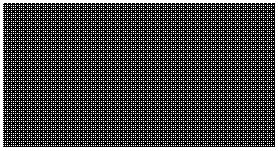










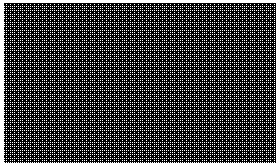



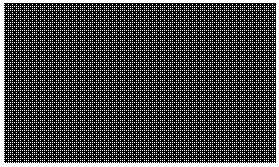









































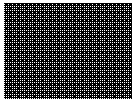




























































































































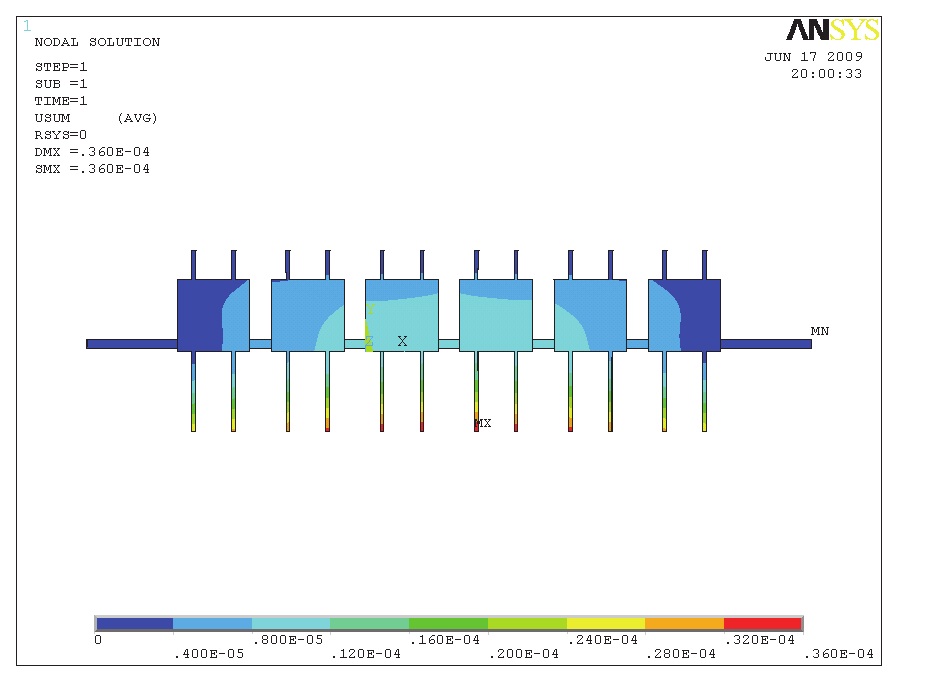
56
Microsensors
Fig. 6. Fabrication processes of the photoelectronic magnetic microsensor with EM wave-
shielded packaging
Fig. 7. FEM simulation using ANSYS to estimate cantilever bended conditions by magnetic
force

Photoelectronic Magnetic Microsensor with a Digit Readout
57
Fig. 8. Magnetic flux induced displacement related to different diameters of fibers
4. Measurement and analysis
The schematic cross-sectional view of the microsensor with interference reducing patterns
connecting with measurement blocks is shown in Fig. 9. When actuated by the magnetic
field, the membrane deflects to push fiber grating stretch that induce peak shift of the Bragg
wavelength. The stretched fiber induces Ni-Fe film deformation actuated by external
magnetic force that is the cause of fiber stretch to change the effective refraction index. The
peak shift amount of Bragg wavelength is proportional to radial magnetic force measured
using an optical spectrum analyzer with 0.01 nm resolution. Developed sensing structure of
the microsensor includes a 300 nm Fe-film coated on FBG fiber and a parallel-plate capacitor
both are deformed by a permalloy embedded polyimide membrane. Another measurement
block diagram in the schematic cross-sectional view of the developed photoelectronic
magnetic microsensor with temperature compensation is shown in Fig. 10. The sensing
mechanism is the FBGs actuated by the covered cantilevers that a ferromagnetic material is
topped on the surface. The cantilevers are attracted and bended to deform the optical
gratings by magnetic flux density from external Nd-Fe-B magnets. The peak shift of the
Bragg wavelength is produced from the major variations of the grating length and the fiber
core effective refraction index. A precision LCR meter (Agilent E4980A) is used to measure
magnetic induced capacitance variation because of the parallel interdigitated cantilever
bends. The measured electrical response is in the range of 1.22 to 38.25 pF that is applied as
a calibrating reference for comparing optical response excited by external magnetic flux. The
signal of position-dependent capacitances is very weak that can be processed by designing
capacitance-to-frequency transferred circuits to amplify magnetic response signal.
Instruments used in the optical-magnetic measurements are very expensive commercial
products. Therefore, to develop a precision, low cost, and portable measurement system is
desired. The angular-orientation interference measurement of the permalloy surrounded
packaging is shown in Fig. 11 to analyze environmental magnetic noise effect. The peak shift
amount of Bragg wavelength is proportional to vertical radial magnetic force measured
using an optical spectrum analyzer with 0.01 nm resolution. Original wave patterns of the






















































































































































































































































































